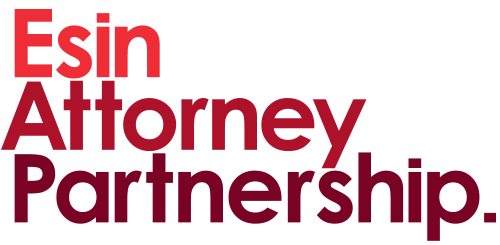Recent Development
The Ministry of Environment and Urbanization (“Ministry”) recently amended the Environmental Impact Assessment Regulation (Çevresel Etki Değerlendirmesi Yönetmeliği) (“EIA Regulation“) to introduce the concept of capacity increase assessment, new standards for the revision of EIA reports, and certain new thresholds. The amendments were published on the Official Gazette and entered into force on May 26, 2017.
What is EIA?
The Environmental Impact Assessment (“EIA“) evaluates, prevents and minimizes the negative impact a project may have on the environment. The Ministry issues one of two decisions: (i) that “the environmental impact assessment is not required,” in which case the sponsors can initiate the projects; or (ii) that “the environmental impact assessment is required,” subjecting sponsors to the environmental impact assessment procedure. The latter projects require an EIA decision under the EIA Regulation indicating that “the environmental impact assessment is affirmative” in order to carry out its activities.
What’s new?
Capacity increases
The amendment introduces rules governing the capacity increases for existing projects. EIA requirements shall be determined based on the following criteria in accordance with the thresholds set forth under the EIA Regulation:
- The process for existing projects’ capacity increases, for which an EIA decision indicating “the environmental impact assessment is affirmative” was obtained, will be conducted by only taking into account the amount of the increased capacity; and
- The process for existing projects’ capacity increases for which an EIA decision indicating “the environmental impact assessment is not required” was obtained, will be conducted by taking into account the sum of the amount of increased capacity and the current capacity of the project.
Revision and completion of the EIA report
Under the EIA Regulation, sponsors, i.e., the project owners, apply to the institutions authorized by the Ministry (“Authorized Institutions”), which prepare the EIA reports and submit these reports to the Ministry for its assessment. If the Ministry decides the report prepared by the Authorized Institution is not adequate, it will return the EIA report to the institution to complete missing documents and fulfill all requirements. Under the recently modified EIA Regulation, the revised/completed report must be submitted to the Ministry within 12 months and the Ministry, upon justified requests, could grant an additional 6 months for completion. If the EIA report is not re-submitted within the granted period, the EIA process is terminated.
Before the amendment, the timeframe for revising/completing the deficient reports was unclear. The amendment not only provides clarity to the initial period for revising and completing the EIA reports, but also enables project owners to request an extension.
Furthermore, after the relevant commission of the Ministry finalizes the EIA report, the Authorized Institutions must submit the final report to the Ministry within 10 days following the completion of meetings held for the examination of the EIA report. After the amendment, the Ministry must grant a 90 days’ period to the Authorized Institutions for the elimination of deficiencies and completion of the EIA report. Failure to provide the completed EIA report within 90 days will result in termination of the EIA process.
Application for incentives, approvals and licenses for projects
Prior to the amendment, projects that have not obtained an EIA decision indicating that “the environmental impact assessment is affirmative” or that “the environmental impact assessment is not required” could not apply for incentives, approvals or licenses, and could not commence any investment and tender processes. The amendment allows for the application for incentives, approvals or licenses without the EIA decisions. This amendment will ease the sponsors’ approach to the EIA process, as they are enabled to concurrently apply for EIA reports and incentives, approvals or licenses.
Bonus: Modification in EIA thresholds for EMI companies and Housing Projects
Prior to the amendment, any mine-hoisting activity was subject to evaluation and EIA approval. The amendment abolished the general provision that subjected all mine-hoisting activities to the evaluation process. However, surface mining activities performed on a worksite of up to 25 hectares (aggregate of the excavation and dumping site) will be subject to evaluation as to whether they require an EIA approval.
Prior to the amendments, (i) wind power plants operating above 50 MWm power required EIA approval and (ii) wind power plants operating above 10 MWm and under 50 MVm power required evaluation as to whether they required EIA approval. The amendments state that any wind power plant that contains 20 or more wind turbines is included in the EIA approval scope, regardless of whether the power operated therein is above 50 MWm or not, and any wind power plant that contains 5 or more wind turbines requires an assessment as to whether they require an EIA approval.
Concurrently, prior to the amendment, (i) solar energy plants operating above 10 MWm power required EIA approval, whereas (ii) solar energy plants operating above 1 MWm and below 10 MVm power were evaluated as to whether they required an EIA approval. After the amendments, any solar power plant that is seated on 20 or more hectares is included in the EIA approval scope, regardless of whether the power operated is above 10 MWm or not, and any solar power plant that is seated on 2 or more hectares requires an assessment as to whether they require an EIA approval.
Similarly, thresholds for other EMI projects that require EIA approval or determination as to whether they fall within the scope of the EIA regulation are modified in a way to decrease the thresholds and to leave the decision on whether such projects are excluded from the EIA Regulation to the Ministry.
Separately, after the amendment, major housing projects containing 200 sections must apply for the EIA evaluation, in comparison with the previous threshold of 500 sections. Mall projects to be constructed on a closed construction area of more than 10,000 m2 must apply for the EIA determination; the previous threshold was 50,000 m2.
Conclusion
These significant changes, particularly relating to the evaluation of EIA reports and capacity increases for projects, will provide more clarity and ease for sponsors regarding the application for EIA approvals made through Authorized Institutions.
Please contact us for more information on how these changes might affect your present and future projects.




